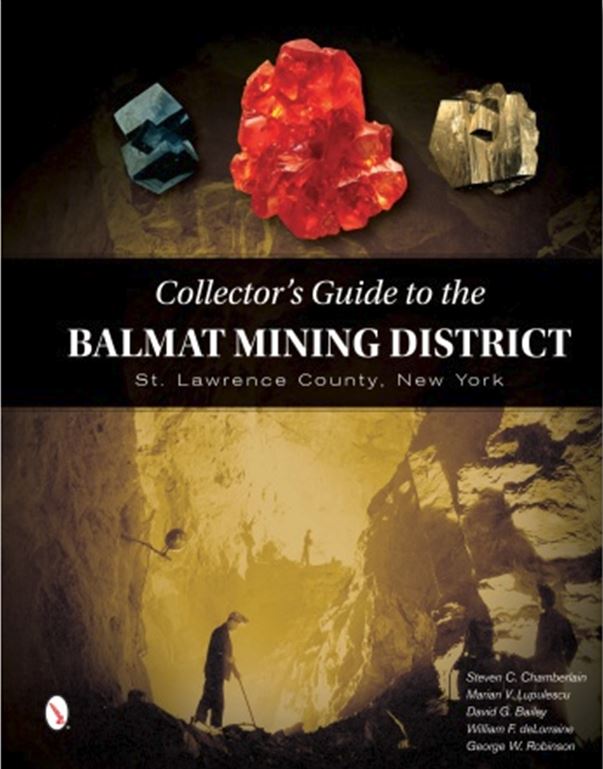Do you need an idea for a gift for that favorite mineral collector on your shopping list? Or perhaps you are like me, and you are looking to buy yourself a nice present? In either case, I may have the perfect book idea for you. How about “A Collector’s Guide to the Balmat District”?

The five authors are a virtual who’s who of New York minerals. From authors to district geologists to professors to museum curators they all have decades of local experience and knowledge to share. They state that the “central purpose of this book is to present detailed information about these important mineral occurrences and celebrate the specimens they have produced.” The book does this and a whole lot more.
The Balmat mining district is important historically in terms of the production of zinc and talc and mineralogically for the variety and quality of fine mineral specimens it has produced. From the initial discovery of zinc in 1836 and talc in 1867 the region has a rich history of mining that continues today. The first chapter of this book details the mines and the people that make that history. This simply sets the stage and whets the appetite for what follows.
Anyone interested in understanding the geology of the locations where fine minerals are found will love the second chapter. Too often this section of mineral books is either missing or disappointing. Not so in this book. The Precambian rocks of the Adirondack Lowlands are certainly not simple to understand. However the author’s discussion of the regional metamorphic events acting on a highly variable, but reasonably orderly, sequence of very old sedimentary rocks is succinct and sufficient. The processes by which zinc, talc, and all those lovely minerals formed can be understood by all.
But with that backdrop, almost three quarters of the book is dedicated to a systematic review of those minerals, complemented by fully credited photographs of some of the best specimens known. Presented separately for the talc mines and then the zinc mines, the minerals are reviewed in alphabetic order. You can read about the famous ones, purple hexagonite from Talcville and perfect tetrahexahedral magnetite from Balmat. There are several minerals for which Balmat is the type locality. Minerals such as donpeacorite, named after a University of Michigan mineralogy professor, was discovered on the 2500’ Level of the Balmat #4 Mine. There is probably no other location where this type of information is so publically available.
Most of the better mineral specimens throughout the Balmat district were collected underground and the few surface collecting opportunities that existed in the past are virtually gone. You can find an occasional piece to purchase at a show, or you can visit the New York State Museum in Albany to see some of the best ever collected. Or, you can purchase this book and view hundreds of them in the comfort of your home. This 128 page hardbound edition contains a whopping 249 figures, a majority of which are exquisite color photographs of some of the best Balmat Mining District mineral specimens ever extracted from the depths of these famous New York mines.
This 9” by 11” hard cover book is brilliant enough to adorn anyone’s coffee table. However, for a New York mineral collecting it is also a must for the library and anyone who reads the professionally written text will come away knowing so much more New York State geology and mining history. I know I did.
